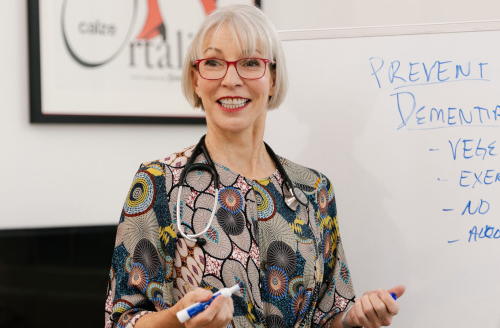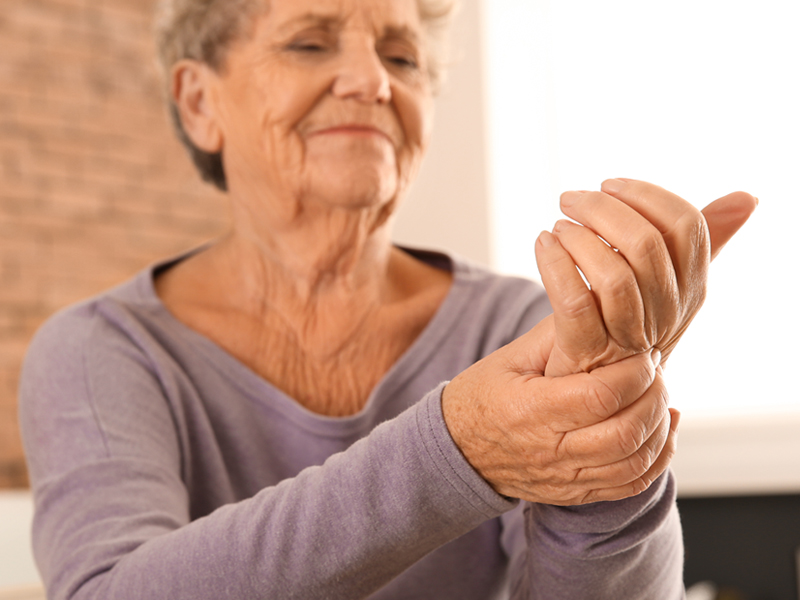We’ve all seen bent over little old ladies, spines almost folded in two, walking gingerly, slowly, down the street. But how does that happen?
It’s important to remember that bones are a bit like the Golden Gate Bridge: They must be constantly maintained. Your body—like the bridge paint and maintenance crews—is constantly trying to build up your bone, putting down calcium over the protein scaffolding of your skeleton. Meanwhile, bone is constantly being chewed up by the bumps and strains of living, in the same way that wind and water and salt constantly chip away at the famous bridge. It’s a constant process, the wearing away and the building up.
When you’re younger, you’re able to build back your bones easily. But as we age, the decrease in hormones like estrogen and testosterone slows down the process. We start to lose more bone than we build.
This is particularly true for women after menopause and for those with a family history of osteoporosis. Thin people are more likely to suffer from this problem, as are those don’t exercise. Someone who eats poorly, and has a diet low in vitamin D and other nutrients, may be doing harm to his bones. Certain diseases and medications can also increase the risk of bone weakness.
As you get older, watch out for the symptoms of osteoporosis. If you have a surprising fracture, such as a spine fracture from trying to open a stuck window, check it out. If you notice that your spine is starting to curve, or that you’re losing height, check it out. If you have unexplained back pain, check it out.
Every woman over age 65 should have a DEXA scan, which measures the spine and the hips for bone density. Sometimes, a physician will recommend an ultrasound of the wrist or the heel. This is just a screening test, the full DEXA scan is better. If the results come back with the words “osteopenia” or “osteoporosis,” treatment should start.
Any elder who fractures a bone should be treated for osteoporosis, and given a physical therapy regimen to prevent falls.
The most common treatments are calcium and vitamin D supplements, injections and other medicines to help build bone.
As with most things in life, an ounce of prevention is worth a pound of cure. Most osteoporosis treatment plans include things that prevent the problem in the first place. That means a diet rich in fruits, vegetables and lean proteins. Learn to love chicken and fish, save the burgers and steaks for treats. Doing weight-bearing exercise is also key. Even the weakest person can get stronger. Start with gentle walks and move up to brisk walking if possible.
We can all do better.

Elizabeth (Dr Liz) has over twenty years of experience in providing medical care to the elders. She is board-certified in Internal Medicine, Geriatric Medicine and Palliative Care Medicine. Dr Landsverk founded ElderConsult Geriatric Medicine, a house calls practice, to address the challenging medical and behavioral issues often facing older patients and their families.

